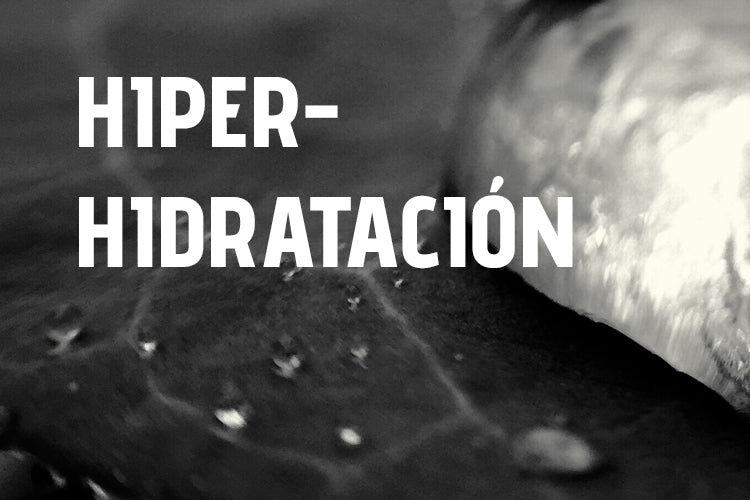We often wonder how much carbohydrate we should eat in the days before a race, so we can have greater energy reserves during the race. And indeed, adopting short-term nutritional strategies to prepare for a race is very helpful. There's a lot of buzz about this, and the question often arises:
What should we eat the week before to optimize our performance?
The answer is that what we eat the week before a competition won't help us on its own. We have to integrate it into a much broader nutritional plan . If we do it right, we can increase muscle glycogen stores by up to 50%, or from 300g to 400g.
Several protocols have been developed since it was discovered that our performance could be increased with a carbohydrate-loading phase prior to a competition. These protocols have the same goal: to completely replenish our body's glycogen stores.
What is a carbohydrate load? What is the purpose of this load?
Before starting with the protocols for carbohydrate loading, it's essential to understand what it's all about and what its purpose is. Carbohydrate loading, also known as tapering, is a nutritional strategy used primarily by athletes to maximize muscle glycogen levels before a competition or high-intensity sporting event.
It consists of deliberately increasing carbohydrate intake in the days prior to the competition, in order to increase glycogen reserves in the muscles and liver.
Glycogen is the main source of energy during high-intensity exercise, so maintaining optimal reserves can improve athletic performance and delay muscle fatigue. Carbohydrate loading is usually done in phases, beginning several days before the event and reducing physical activity to promote glycogen storage.
Carbohydrates are the body's primary source of energy, and proper loading can improve endurance, strength, and recovery ability during prolonged exercise.
The Classical Model
It was in the 1960s when the first muscle biopsies began to be performed and this allowed researchers to take samples of muscle tissue, study and measure the glycogen stored in the muscle tissue. (1) It was discovered that:
- Glycogen concentration decreases during exercise, especially higher intensity exercise.
- Higher muscle glycogen concentrations resulted in less fatigue and better performance.
From here, studies began to be conducted to see how muscle glycogen concentration could be increased and thus try to improve athletic performance.
One of these studies was the one that popularized the first carbohydrate loading protocol, the famous “ Scandinavian diet .”
Steps of the protocol
Seven days before the competition, a very intense workout is performed to deplete glycogen stores. Then, for the next three days, carbohydrate intake is reduced to a minimum. This is followed by three days of very high carbohydrate intake.
With this carbohydrate loading protocol , it was observed that glycogen overcompensation was achieved, leaving the stores much fuller than if a moderate amount of carbohydrates were eaten every day. (1)
Disadvantages of this carbohydrate loading protocol
As Professor A. Jeukendrup explains, this protocol presents some “minor problems” that must be taken into account.
The first problem is that it involves extremely intensive glycogen-depleting training just seven days before the competition. This training can leave you excessively fatigued or even with muscle soreness.
Similarly, by strictly restricting carbohydrate intake for the three days following this glycogen depletion, the feeling of both physical and mental fatigue is very pronounced.
Restricting carbohydrate intake so much to maintain the necessary calorie intake requires a high-fat diet, which can cause significant gastrointestinal discomfort. Furthermore, to ensure supercompensation, once glycogen stores have been depleted through intensive training, it is recommended not to train further.
For many athletes who are coming from relatively high training volumes, being forced to stop abruptly six days before a competition represents a much greater sacrifice and punishment than dietary restrictions.
Overall, although this protocol was highly effective, the side effects Professor A. Jeukendrup mentions may make these "minor problems" not outweigh the benefits it may bring you.
The Modified Model (2)
For this reason, in the 1980s, other carbohydrate-loading protocols began to be studied, a bit more conservative and moderate, to minimize the negative effects, but still achieve good results.
In the new protocols, glycogen-depleting exercise was eliminated , and as training tapered toward the race, carbohydrate intake was gradually increased.
Glycogen concentrations appear to be very high even after 6-7 days. Although glycogen loading did not reach levels as high as in the traditional protocol, the race results were also good.
This carbohydrate-loading protocol is based on following a normal nutritional regimen without altering any macronutrients, either excessively or insufficiently, and then increasing carbohydrate intake by 8-12 g/kg of body weight for the three days prior to competing.
Moderate protocol or 1 Day (3)
In the 1990s, studies showed that high-level, well-trained athletes could achieve similar muscle glycogen concentrations with just one or two days of carbohydrate loading and reduced training on those days. (In less well-trained athletes, this seemed to take a little longer.)

That's why it's very important not to increase your fat or protein intake in the days leading up to the competition and to maintain a nutritional regimen tailored to your needs. It has been shown that an increase in fat intake seven days prior to a competition, combined with a complete exclusion of carbohydrates, when loading 2-3 days before, does not result in the synthesis of as much muscle glycogen as with the moderate or 1-day protocol .

As you can see in the chart, pre-race nutritional guidelines of less than 8 grams of carbohydrate per kilogram of body weight are insufficient to obtain the maximum benefit from tapering or carbohydrate loading . Make sure you reach this minimum amount to achieve maximum performance on race day.
On the other hand, all of this should be practiced in non-target competitions to test foods, digestion, tolerance, and loading levels. This ensures that the week before a target competition, we don't try anything new and consume the maximum tolerated amount of carbohydrates per day, avoiding problems such as osmotic diarrhea.
For shorter duration triathlons , such as sprint distance, the 24-hour period prior to the triathlon will provide adequate time to normalize muscle glycogen stores and can usually be achieved with a CHO-rich diet of at least 6 g CHO per kg body weight during the 24 h prior to race day (8).
For triathlons lasting longer than 90 min , super-compensation of glycogen stores can be beneficial and can be achieved by most well-trained or elite level athletes in the 36-48 h prior to competition by increasing dietary CHO intake to approximately 10-12 grams CHO per kg of body weight. (9)
Final notes on carbohydrate loading protocols
To date, it has been shown that the Classic Model has more disadvantages than advantages (including gastrointestinal problems, poor recovery, mood swings, and risk of injury).
It is based on the principle of carbohydrate depletion/loading . There is a preliminary phase in which the subject is brought to a carbohydrate-deficient state by reducing intake by 90%, and a second phase in which a high load is provided, thereby achieving a preventative response from the body consisting of supercompensation (an increase in muscle glycogen stores).
On the other hand, the Modified Model is based on the classic one, with the difference that in the depletion phase the subject is administered only 50% less carbohydrates than what was administered before the protocol.
The pros and cons of carb loading
- This protocol can improve performance by 2 to 3%, and endurance by up to 20%. However, this applies to activities lasting more than 90 minutes. (2, 4, 5)
- Each gram of CHO is stored with 2.7-3 grams of water, meaning that 0.5 kg of CHO represents a 2 kg weight gain. Therefore, it is necessary to assess whether it is preferable to gain weight or sacrifice glycogen stores. (6)
- It contributes to a better perception of fatigue and, therefore, better energy management throughout the competition. (7)
Therefore, as a general recommendation, carbohydrate loading should be performed when:
- The competition is of high intensity for 90 minutes or more.
- The athlete's diet should be less than 7-8 g CHO/kg of body mass/day.
- There are no medical contraindications, with special attention to diabetic athletes.
Literature
- 1Jonas Bergström,Lars Hermansen,Eric Hultman,Bengt Saltin. Diet, Muscle Glycogen and Physical Performance. October 1967
- WM Sherman, DL Costill, WJ Fink, JM Miller. Effect of exercise-diet manipulation on muscle glycogen and its subsequent utilization during performance. Int J Sports Med. 1981 May;2(2):114-8.
- Sim M, Garvican-Lewis LA, Cox GR, Govis A, McKay AKA, Stellingwerff T, Peeling P (2019) Iron considerations for the athlete: a narrative review. Eur J Appl Physiol.
- Jäger R, Kerksick CM, Campbell BI, Cribb PJ, Wells SD, Skwiat TM, et al (2017). International Society of Sports Nutrition Position Stand: Protein and Exercise. J Int Soc Sports Nutr 14, 20.
- Jeukendrup AE, Jentjens RLPG, Moseley L (2015). Nutritional Considerations in Triathlon. Sports Med 35, 163–181
- Getzin AR, Milner C, Harkins M (2017). Fueling the Triathlete: Evidence-Based Practical Advice for Athletes of All Levels. Curr Sports Med. Rep 16, 240–246.
- Bussau VA, Fairchild TJ, Rao A, Steele P, Fournier PA (2002). Carbohydrate Loading in Human Muscle: An Improved 1 Day Protocol. Eur J Appl Physiol 87, 290–295.
- Luisa M. Burke, Juan A. Hawley, Esteban HS Wong & Asker E. Jeukendrup. Carbohydrates for training and competition. Pages S17-S27 | Accepted 01 May 2011, Published online: 09 Jun 2011
- Nutrition and Athletic Performance. Medicine & Science in Sports & Exercise: March 2016 – Volume 48 – Issue 3 – p 543-568




Leave a comment
This site is protected by hCaptcha and the hCaptcha Privacy Policy and Terms of Service apply.